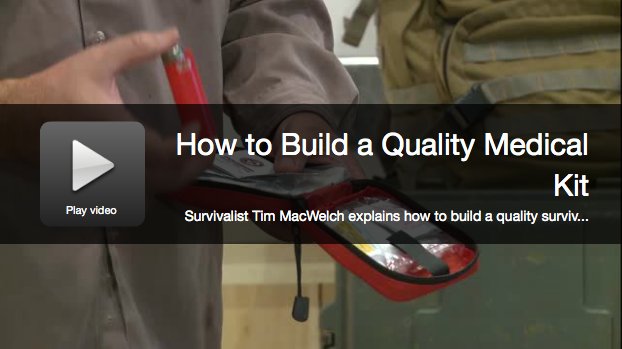Since you never know when a medical emergency will arise, a well-planned medical kit might be your most important asset to survival. I keep one in each of my family’s vehicles, an even bigger kit at home (where injuries are most likely to occur), and I keep a kit with my outdoor gear so that I’m prepared in the event of a medical emergency outdoors.
You could buy an IFAK (individual first aid kit) and soup it up with some extra supplies, or buy the components of a complete kit off the rack and build it yourself. Either way, it’s better to have it and not need it than to need it and not have it. Use the following list to build a quality medical kit of your own.
1 – lighter
1– multi-tool
1 – space blanket, to wrap up the patient and discourage shock
1 – headlamp
6 – 4×4-inch non-stick gauze pads
1 – 8×10-inch trauma pad
1 – 4-inch Israeli dressing
2 – pairs of non-latex gloves
1 – roll of 1-inch tape
20 – assorted flexible fabric bandages
1 – 3-inch by 5-yard self-adhering bandage. Replace this every year, as the adhesive binds the whole thing together over time.
1 – QuikClot ACS (clotting sponge)
20 – antiseptic wipes
2 – Ammonia inhalant swabs, to revive the patient
1 each – CPR mask, tweezers, EMT shears, eyewash, burn gel packet
1 each – Eye pad, tourniquet, triangle bandage, tube of triple antibiotic ointment (Neosporin or similar)
A final thought: Realize that owning this gear doesn’t magically instill in you the know-how to use it. Get some proper medical training for the use of the supplies in your first aid kit.
What else do you include in your kit? Let us know in the comments.
